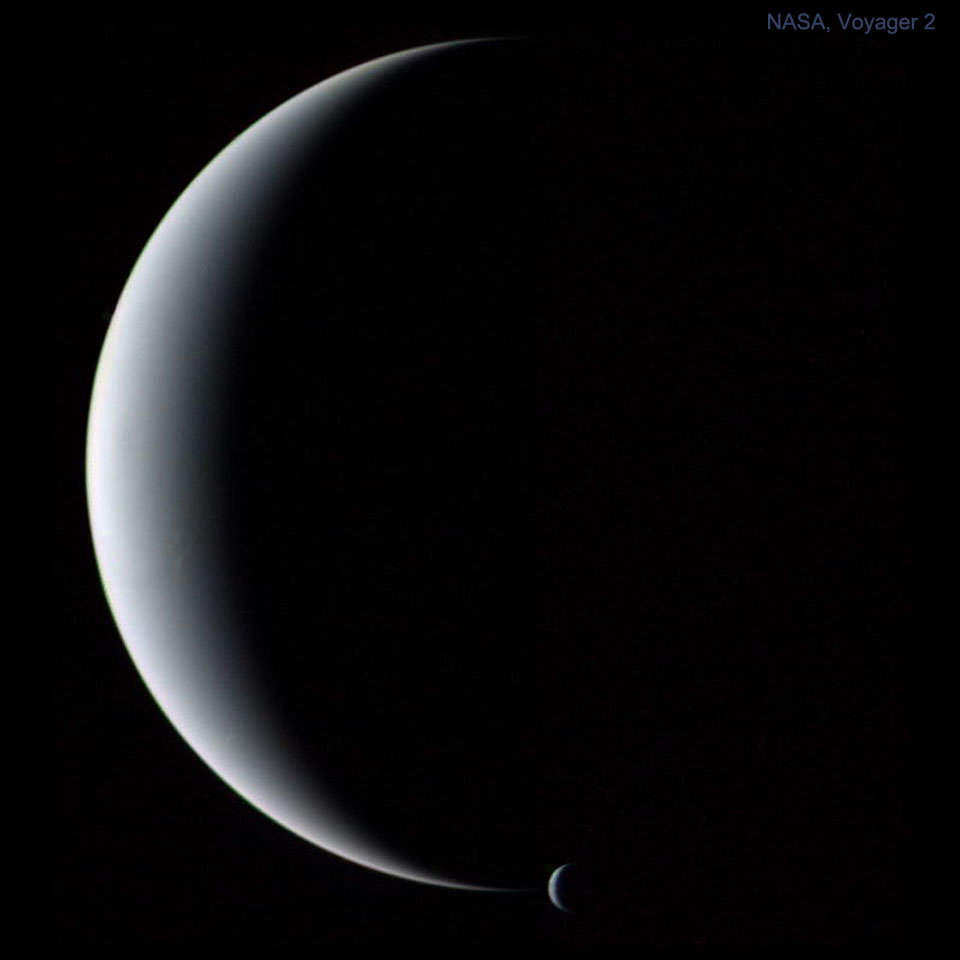2021年7月25日
Crescent Neptune and Triton
Image Credit: NASA, Voyager 2
Explanation: Gliding silently through the outer Solar System, the Voyager 2 spacecraft camera captured Neptune and Triton together in crescent phase. The elegant picture of the ice-giant planet and its cloudy moon was taken from behind just after closest approach in 1989. It could not have been taken from Earth because Neptune never shows a crescent phase to sunward Earth. The unusual vantage point also robs Neptune of its familiar blue hue, as sunlight seen from here is scattered forward, and so is reddened like the setting Sun. Neptune is smaller but more massive than Uranus, has several dark rings, and emits more light than it receives from the Sun.
Tomorrow’s picture: galaxy grabber
蛾眉相的海王星和海卫一
影像提供: NASA, Voyager 2
说明: 当年静静的在太阳系外围曳航时,旅行者2号探测器的相机,拍下了这幅蛾眉相海王星和海卫一的影像。这是从地球拍不到的海王星影像,因为较近太阳的地球,所见的海王星永远满相。 1989年拍摄这幅影像时,旅行者2号刚通过最靠近海王星的位置,并旋绕到这颗气态巨行星和它云雾弥漫卫星的后方。在旅行者2号这个不寻常的视角,海王星熟悉的泛蓝色泽不见了,因为阳光透过海王星的大气时,蓝光大多被散射掉,让它看起来较像是红化的落日。拥有数道黝黑行星环的海王星,体积比天王星小,不过质量反而较大,而且辐射的热能也比得自太阳的要多。
明日的图片: galaxy grabber



